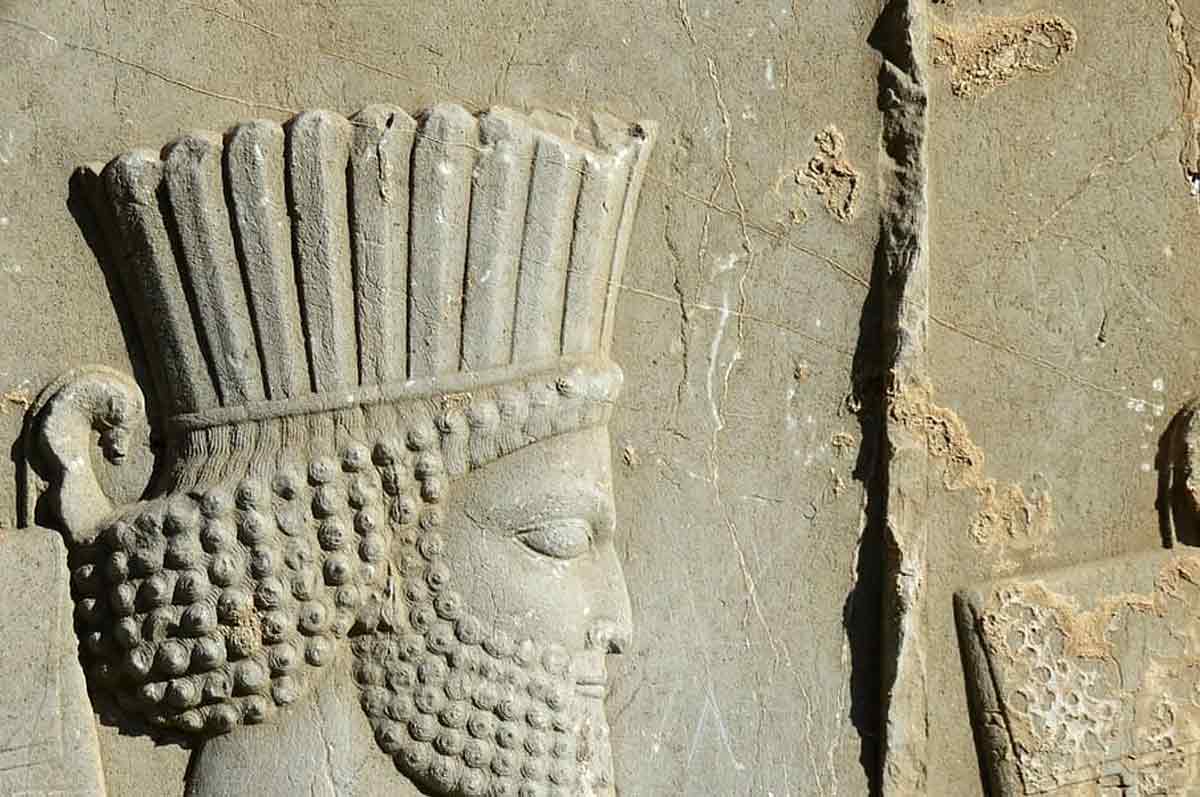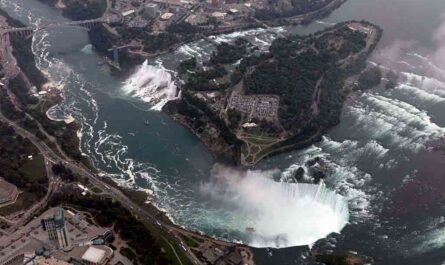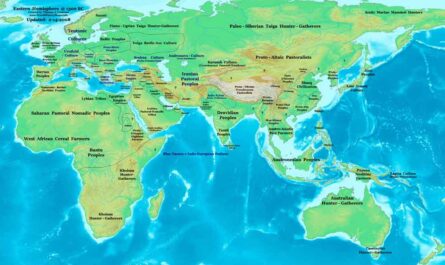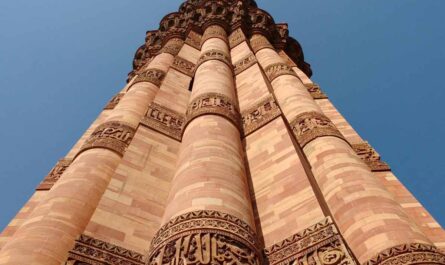The golden days of the Persian Empire were not only a symbol of interesting Facts as well as many Achievements. The first Persian Empire or the Achaemenid Empire was an empire based in West Asia, founded by Cyrus the Great. This article will discuss about Persian Empire Facts and its many great Achievements.
The First Persian Empire left an indelible mark on history with its exceptional achievements, vast territorial reach, technological innovations, and appreciation for luxury. Its administrative structure, with satraps overseeing various regions, demonstrated its ability to effectively govern a diverse and extensive empire. The Persian Empire’s legacy continues to be celebrated for its contributions to both ancient and modern civilization.
Interesting Persian Empire Facts and Achievements
During the rule of Darius’ son, Xerxes, the empire started experiencing a decline. His ill-fated campaign to invade Greece severely drained the royal treasury, and upon his return, he continued with reckless spending. Eventually, Alexander the Great conquered Persia in 334 B.C.E.
The Persian Empire, also referred to as The Achaemenid Empire, is a pivotal chapter in ancient history. It thrived from 550 BC until around 330 BC when Alexander the Great’s conquest brought it to an end. This ancient civilization holds a captivating allure due to its rich culture and history. To delve deeper into this intriguing empire, here are some lesser-known facts:
1. The Persians pioneered the world’s first Human Rights Charter
While the Greeks are credited with inventing democracy, it was in Persia, around 539 BC, that the world’s inaugural human rights charter took shape. Commissioned by King Cyrus the Great, the founder of the Persian Empire, this charter, known as the Cyrus Cylinder, articulates principles akin to those found in contemporary human rights documents. It advocated equality for all races, languages, and religions, reflecting the Empire’s remarkable diversity. The charter is inscribed in the Akkadian language.
2. Origin of the Name “Persia”
The term “Persia” finds its etymological roots in the historical region known as “Persis,” which was situated near the Persian Gulf, within the larger Persian province. It’s important to note that this region played a significant role in the history of ancient Iran. It was here that Cyrus the Great, a pivotal figure in Persian history, hailed from. Cyrus embarked on a remarkable campaign, originating in Persis, with the aim of unifying the diverse regions across the Iranian peninsula, ultimately culminating in the establishment of the Persian Empire.
As a result, individuals who identify as Persians may have strong associations with either the Persian province itself or the historical legacy linked to the “Persian name.” However, it’s crucial to recognize that these individuals are, in fact, Iranians by nationality and share a common heritage with the broader Iranian culture.
3. Prowess and Geographic Extent
The Persian Empire established itself as a formidable and powerful entity from 539 BC to 331 BC. It is worth noting that this empire, initially ruled from Persia (modern-day Iran), eventually became the largest empire in ancient history. Its territorial expanse was truly remarkable, stretching extensively from the Balkans Peninsula in the west to the Indus Valley in the east.
This vast domain encompassed regions with rich resources, including abundant water sources, fertile farmland, diverse livestock, and substantial gold reserves. Furthermore, it’s important to highlight that the Persian Empire was not just a conquering force; it was notable for its ability to assimilate various civilizations and cultures into its vast dominion. The influence of the Zoroastrian religion, prevalent during this time, added to the empire’s unique character.
4. Innovation and Technological Advancements
The Persian Empire made significant contributions to technology and innovation. Among its notable inventions were the horizontal ventricles used for grain grinding and pumping. This innovative approach to grain processing enhanced agricultural productivity and efficiency.
Moreover, the Persians can be credited with pioneering early forms of refrigeration and underground ventilation systems. Their creation of the “yakhchal,” a refrigeration structure, demonstrated their advanced understanding of cooling techniques. These technological advancements not only improved their daily lives but also showcased their intellectual prowess.
5. Royal Purple and Luxury
The use of Murex shell-derived purple dye, known as bromine-red purple, was a distinctive feature of the Persian Empire. This dye was exceptionally rare and held significant monetary value. In fact, it was one of the most expensive natural dyes of its time. The allure of this dye was so captivating that even among the wealthy and elite, alternatives were considered costly and beyond the reach of the common populace.
This royal purple was highly esteemed and often associated with Persian royalty. It was used to craft opulent purple-colored robes, which were presented as prestigious gifts to high-ranking officials. This practice highlighted the empire’s penchant for luxury and its appreciation of extravagant materials.
6. Pasargad: Birthplace of the Persian Empire
Pasargad, located in the city of Shiraz, holds immense historical significance as the birthplace of the Persian Empire. It was here that Cyrus the Great spearheaded the construction of the empire’s inaugural metropolis, known as Porgadai. Within Pasargad, a remarkable landmark stands—the tomb of Cyrus, which was subsequently completed by his successor and second son, Cambyses. This historic site effectively served as the capital of the Persian Empire during its formative years.
One of the notable architectural feats of Pasargad is its ability to withstand formidable natural forces, including earthquakes of up to 7 magnitude. This remarkable resilience adds to the allure of Pasargad as a tourist destination, drawing visitors from around the world to explore its rich historical and cultural heritage. Learning Language Guide, Speaking, Reading, Writing, Listening Skills
7. The First Suez Canal
The first mention of a canal linking the Nile and the Red Sea dates back to around 600 BC when the Egyptian pharaoh Necho initiated its construction. However, this ambitious project was abandoned when it was only halfway completed. It wasn’t until the reign of Darius I, in about 500 BC, that the canal was finally completed. This canal, which predated the modern Suez Canal, followed a course similar to the present-day one, running from the Nile Delta through the Bitter Lakes to near the port of Suez. Remarkably, Darius’s canal remained in use for many centuries, serving as a vital trade route until the 8th century AD. The enduring legacy of this ancient engineering feat foreshadowed the significance of the Suez Canal in modern times.
8. Men of Magic
The term “magic” has its origins in the Magi, a mysterious and influential priestly clan in ancient Persia. The Magi were revered for their wisdom in religious matters and likely served as scribes and record keepers as well. Over time, the concept of magic evolved, with some Magi in Babylonia specializing in fortune-telling and performing religious wonders. It’s worth noting that three Persian Magi are mentioned in the Gospel of St. Matthew as the “wise men from the east” who journeyed to visit the infant Christ, illustrating the lasting impact of Persian culture and traditions on global history.
9. Cult of Mystery
In ancient Persia, one prominent religious belief was the cult of Mithras. This deity was often depicted as a man slaying a bull. Remarkably, the Mithraic religion was exclusive to men, and its rituals bore some resemblance to those of Christianity, including water baptism and the sharing of a sacramental meal. The cult of Mithras eventually spread westward and found particular favor among Roman soldiers due to its emphasis on warrior virtues such as strength and courage. This religious syncretism showcases the influence of Persian culture on the wider Mediterranean world.
10. Guarding the Harem
Persian kings, known for their opulent lifestyles, maintained extensive harems consisting of numerous wives and concubines. Eunuchs were responsible for guarding these harems. After the conquest of Babylonia by Cyrus in 539 BC, the province was required to supply already castrated boys annually to train as eunuchs. Among the Persian monarchs, Xerxes I is notorious for the size of his harem, reputedly containing as many women as there were days in a year. His story also appears in the Old Testament’s Book of Esther, where he is known as King Ahasuerus.
11. Women’s Rights
The concept of women’s rights and gender equality has deep historical roots, with notable instances dating back to antiquity. While the Declaration of Independence in 1776 and the Declaration of the Rights of Man and the Citizen in 1789 are often regarded as early milestones in recognizing human rights, it’s essential to acknowledge that even earlier, the Persian Empire had implemented a charter of rights approximately 2,000 years before these events.
Persian women, during this ancient era, enjoyed remarkable rights and privileges compared to their counterparts in other ancient civilizations, except perhaps Egypt. These rights included equal compensation for men and women of lower classes performing the same tasks, opportunities for women to manage male employees, and women holding positions of authority, referred to as “Arashshara” or Great Chief. Furthermore, women could own land, serve in the military, and establish their enterprises. The prevalent deity in early Iranian religion, Anahita, continued to be revered even after the Persian conversion to Zoroastrianism.
Notably, Cyrus the Great, a Persian monarch, advocated for religious freedom and equality among citizens. The discovery of the Cyrus Cylinder in 1879, bearing his ideas of ethnic, linguistic, and religious freedom, highlighted his contributions. Though opinions vary on whether these actions solely aimed to appease the gods or genuinely benefit his subjects, the cylinder is widely recognized as a significant artifact in Persian history.
12. Birthday Celebrations & Dessert
The customs of celebrating birthdays with special attention to dessert and animated entertainment can be traced back to Persian origins. Initially, birthday celebrations in Persia were associated with the monarchy, eventually extending to the nobility and the broader population. These celebrations featured a cake adorned with lit candles, special dishes in honor of the celebrant, and animated entertainment, often involving objects like cups depicting a leaping goat when spun.
The tradition of dessert after meals, including birthdays, was prevalent in Persian culture. The Persians held the Greeks in low regard for not appreciating the value of sweets, emphasizing the importance of indulgence in Persian culture.
13. Postal System & Hospital
Under the rule of Darius I, the Persian Empire established a pioneering postal system and a network of roads designed to facilitate travel. This system allowed mounted couriers to transport messages efficiently between various cities and encampments. These couriers were so dedicated to their task that they continued their missions regardless of adverse weather conditions, earning admiration even from Greek historians like Herodotus.
Interestingly, the United States Postal Service later adopted a modified version of Herodotus’ praise for the Persian postal service as its unofficial slogan.
Additionally, the Persians made significant contributions to healthcare by founding the first hospitals. The Academy of Gundeshapur, established during the reign of Shapur I, served as a hub for learning and culture and became the world’s first teaching hospital under the later Sassanian king Kosrau I. This institution admitted physicians and scholars from various ethnic backgrounds, marking a significant advancement in healthcare services.
14. Truth as the Highest Value
Persian culture placed a strong emphasis on truth and integrity, as evident in the inclusion of the word “asa” or “arta” (truth) in many Persian names, including those of monarchs. Truth was one of the oaths taken by soldiers upon joining the military. Persians held a disdain for liars and individuals in debt, perceiving them as likely to resort to falsehoods to evade repayment.
The concept of truth extended to religious beliefs, with the Persians practicing Zoroastrianism, which emphasized the importance of truth. The belief in the afterlife, where individuals faced consequences for their actions, including dishonesty, contributed to this cultural emphasis on truth.
15. Fatalism as Literary Motif
Fatalism, the belief that one’s fate is predetermined and unchangeable, emerged as a prominent literary motif in Persian culture. This motif finds its roots in Zoroastrianism, particularly the sect known as Zorvanism. Zurvan, the God of Infinite Time in Zorvanism, represented the idea that individuals could not alter their destiny.
Renowned Persian poets like Omar Khayyam and Ferdowsi incorporated fatalistic themes into their works, emphasizing the ephemeral nature of life and the inevitability of mortality. These themes later influenced Greek, Roman, and contemporary literature, highlighting the enduring impact of Persian culture on literary thought.
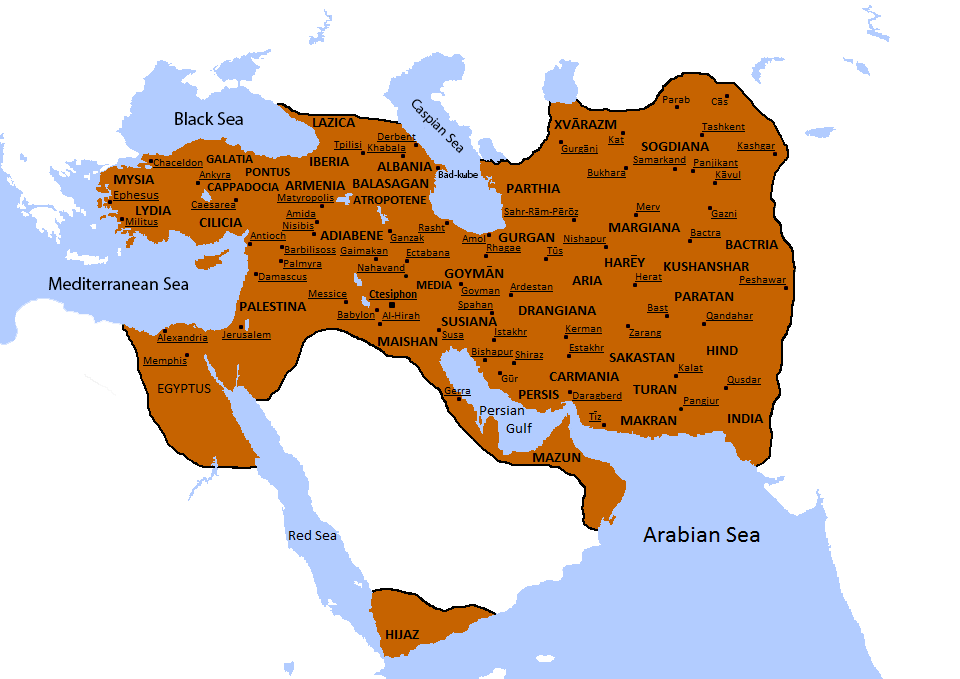
16. The Armed Forces
The Persian armed forces were highly organized and distinguished by several notable features. Training for combat commenced at a young age, with boys from the upper class undergoing preparation until they reached either 20 or 24 years of age, depending on historical accounts. Soldiers, regardless of their status, received military training that lasted until they were 24 years old.
The Persian army, known for its discipline and uniform appearance, included soldiers who wore the same distinctive attire. Each soldier was outfitted with a finely woven tunic and pants, covered by a coat of mail resembling fish scales. Notably, even officials in lesser positions received capes made of the finest material. The Persian military maintained a strict code of appearance and conduct, reflecting the importance of discipline and consistency.
17. Stormy Crossing
During the Persian king Xerxes I’s campaign against Greece in 480 BC, he faced a logistical challenge when attempting to cross the Hellespont Strait. Engineers constructed pontoon bridges to facilitate the movement of his armies. However, a severe storm destroyed the bridges. In a fit of anger, Xerxes ordered his men to lash the waters with 300 strokes and symbolically cast a pair of shackles into the sea. Some accounts even suggest branding the waters with hot irons. Fortunately, subsequent engineers succeeded in creating safe crossings. This episode is a part of the larger narrative of Xerxes’ invasion of Greece, which ultimately ended in his withdrawal following a defeat at the Battle of Salamis. Self Development, Productivity, Time Management, Happiness
18. Innovators in Refrigeration Technology
The history of refrigeration takes an interesting turn when we look at the Persians. While they may not have directly created the modern refrigerators we use today, they developed a remarkable technology called Yakhchals, which played a crucial role in preserving food. These Yakhchals were, in essence, large underground chambers ingeniously designed to harness the power of nature, particularly the wind. By utilizing wind catchers and constructing these chambers with heat-resistant mud bricks, the Persians created what we can consider as early “refrigerators.” These Yakhchals proved highly effective, especially in combating the scorching Persian summers, ensuring that food remained preserved for extended periods.
19. Originators of the Concept of Paradise
The influence of Persian culture reaches far and wide, even into the concept of paradise itself. The term “Paradise” finds its roots in Persian culture. The Persian term “pairi-daeza,” signifying beautiful and well-maintained gardens, directly impacted the English word “Paradise.” These stunning gardens were not just a linguistic influence but also a cultural marvel. Maintaining such gardens in the extreme climatic conditions of Persia was no small feat, but their grandeur and beauty were truly remarkable. Initially founded by Cyrus the Great, these gardens served not only as places of aesthetic delight but also as sanctuaries for humans and animals alike.
20. Adherents of Zoroastrianism
Zoroastrianism, often regarded as the world’s earliest monotheistic religion, had a profound influence on Persian culture and spirituality. Prophet Zoroaster held a central role in Persian religious life, shaping their beliefs and values. Remarkably, despite the Empire’s vast diversity, individuals were generally permitted to practice their own religions. Nevertheless, Zoroastrianism remained a defining element of Persian culture, setting it apart from the prevalent polytheistic beliefs of societies like Ancient Greece.
21. A Model Bureaucratic Nation
The Persian Empire was renowned for its robust governmental and societal structure, characterized by well-defined class divisions. At the helm of the Empire was the all-powerful King, while provinces were governed by individuals known as “The Satrap.” This system, initially implemented by King Darius, was crafted to prevent the accumulation of power in specific regions. The Satraps held significant responsibilities, playing a crucial role in upholding law and order, often working closely with the Empire’s military forces. However, it’s notable that kings resorted to employing spies as a countermeasure against corruption in the provinces, revealing a level of mistrust within the system.
22. Rulers of Nearly Half the World’s Population
The scale and magnitude of the Persian Empire’s influence are staggering. In the year 480 BC, the population of the Persian Empire reached an astounding 50 million people. This figure represented a remarkable 44% of the world’s total population during that era. To put this into context, the current population of the United Kingdom hovers around 50 million as well. This demographic dominance remains unmatched and serves as a testament to the sheer size and significance of the Persian Empire in world history.
23. Life-Saving Reply
Cambyses, the son of Cyrus the Great, was known for his volatile temper and penchant for seeking validation from his subjects. Asking individuals for their opinions about him was a risky proposition, as an undiplomatic response could cost someone their life. Nevertheless, a clever courtier managed to provide a response that spared his life. This episode, recounted by the Greek historian Herodotus, highlights the intricate dynamics of the Persian royal court during Cambyses’ reign.
24. Flames Over The Palace
Persepolis, an extensive palace complex built by Darius I in what is now southern Iran, featured a remarkable hall capable of accommodating 10,000 people. What made this architectural marvel possible was the use of enormous cedar beams imported from Lebanon. These beams, with their exceptional load-bearing capacity, allowed for a spacious interior with fewer supporting pillars. The name “Persepolis” is a Greek corruption of the Persian term “Parsa,” derived from the province in which it was located. Tragically, Persepolis met its demise when Alexander the Great’s forces razed the wooden palace to the ground in 331 BC.
25. The First World Empire
The Persian Empire reached its zenith under the rule of Darius I, who ascended the throne in 522 BC. This vast empire stretched approximately 4,000 kilometers (2,500 miles) from the River Indus in present-day Pakistan to Benghazi in Libya in the west. It encompassed territories along the Arabian Sea to the north, extending to the Caucasus and Macedonia in the north. Spanning roughly 5,000,000 square kilometers (almost 2,000,000 square miles) and with a population of 10,000,000, it marked one of the earliest instances of a “world empire.” Darius’s ambitious reign and extensive territorial holdings solidified the Persian Empire’s place in history as a monumental and influential civilization.
26. Persian Linguistics
Persian language and linguistics have evolved significantly over the centuries. Old Persian served as the communication language during the Achaemenid Empire, sharing linguistic traits with Sanskrit and Avestan. However, the transition to Middle Persian, known as Pahlavi, occurred after the fall of the Achaemenid Empire.
Pahlavi became the regional language in the province of Pars and persisted even as Arabic became essential following the Arab conquest. Over time, Pahlavi evolved into Modern Persian, also known as Farsi. Persian poetry, particularly ghazals, played a significant role in cultural expression, often celebrating themes of wine, love, and nature. Poetry introductions were a crucial element of these works and were frequently performed at ceremonial events and festivals.
27. Persian Rugs
Persian rugs, renowned for their intricate designs and patterns, have their origins in the practical need to combat severe weather, particularly during the harsh Persian winters. Initially woven by nomadic Persian tribesmen, the art of carpet weaving evolved into a cultural and artistic phenomenon as trade expanded and the empire grew.
Persian rulers, including Cyrus the Great, recognized the beauty of these rugs, and Cyrus himself adorned his tomb with them. The history of carpet weaving spans more than 2,500 years, and with each conquest or invasion, the designs and patterns evolved. The oldest known carpet, preserved in Siberia’s Altai Mountains, showcases the development of intricate patterns beyond simple designs, underscoring the artistic significance of Persian rugs. Today, these rugs remain prized for their aesthetic appeal and cultural heritage.
28. Demand for Absolute Obedience
Persian emperors insisted on unwavering obedience from their subjects. This uncompromising stance was epitomized by their title, “The King of Kings,” signifying their preeminent status within the Empire. This title reinforced the notion that the King was the paramount figure in the realm.
Ancient Persia was not merely a bygone empire but a significant contributor to the modern world’s history, art, architecture, and culture. Its contributions were pivotal in shaping civilizations beyond their borders. While many aspects of the empire remain shrouded in mystery, the existing evidence attests to Persia’s technological advancement for its time and its vibrant and diverse culture. Cracking the Federal Job, Resume, Job Application, Career Guide
29. Human Rights
The concept of human rights can be traced back to ancient Persia, where an intriguing artifact known as the “Cypress Cylinder” provides early evidence of this notion. Created around 3 B.C., this cylindrical clay object holds a unique historical significance. The contents inscribed on the cylinder are in the Akkadian language and address fundamental principles related to equality. Notably, these principles encompassed aspects such as race, religion, and language. This early expression of human rights highlights the Persians’ progressive stance on promoting equality among their subjects, setting a precedent for the recognition of fundamental rights and freedoms.
30. The Army
Ancient Persian society placed a significant emphasis on military training, as documented by Greek historian Herodotus. According to historical accounts, every Persian adult, particularly those belonging to the societal elite, underwent rigorous military training until the age of 20. This commitment to military preparation reflects the Persian Empire’s dedication to maintaining strong and disciplined armed forces, which played a crucial role in the empire’s power and expansion.
31. Satraps and Administrative Structure
In the administrative hierarchy of the Persian Empire, the position of a satrap held immense importance. This role can be likened to that of a modern-day governor. The empire was divided into approximately 20 to 30 satrapies, each headed by a satrap. The primary responsibilities of satraps included collecting taxes and enforcing the law within their respective regions. This decentralized administrative structure allowed for efficient governance across the vast empire. The satraps played a pivotal role in maintaining order and facilitating the flow of resources within their territories.
32. Royal Protector
The Persian Empire boasted a formidable royal guard known as the “Ten Thousand Immortals.” This elite group of guards, despite its name, always maintained a consistent number of members. Intriguingly, if one of these royal protectors met their end, an immediate replacement was summoned, ensuring that the group’s strength never fell below ten thousand. The “Ten Thousand Immortals” served as a symbol of the empire’s commitment to safeguarding the Persian royalty and maintaining a formidable presence in the face of potential threats.
33. Royal Road
The construction of the Royal Road stands as a remarkable engineering feat of the Persian Empire, attributed to the Great Darius. Spanning an astonishing 1,700 miles, this ancient thoroughfare stretched from Sardis to Shuja, traversing diverse landscapes and connecting distant regions of the empire. The Royal Road served as a vital communication and transportation route, facilitating the swift movement of people, goods, and messages across the vast Persian Empire. Its grandeur and extensive reach reflected the empire’s commitment to efficient governance and communication.
34. The Splendor of Persian Gardens
When discussing paradisiacal gardens, the conversation invariably leads to Persian gardens. In the 1970s, an excavation effort led by David Stronach uncovered the secrets of these magnificent gardens. It was postulated that there existed a private entrance, guarded by the palaces of Pasargad, that granted access to these awe-inspiring gardens.
Inside the gardens, a sensory marvel awaited: lush greenery, meandering water channels, elegant pavilions, terraces offering breathtaking vistas, tranquil pools, and enchanting walkways. At the heart of this botanical paradise lay a central pool, ingeniously designed to branch into four separate streams, each cascading into distinct channels, creating a harmonious symphony of water.
Historical records dedicated to the art of gardening provide intriguing insights. They describe the presence of an array of exotic animals that roamed the grounds, adding a sense of wonder to the lush landscape. The gardens were also adorned with foreign plant species, including tamarisk, oleander, roses, and violets. Many of these botanical treasures held dual significance, serving both ornamental and utilitarian purposes, as they were used in the creation of perfumes and herbal concoctions.
35. Zoroaster
The prophet Zoroaster holds a prominent place in Persian history and culture. Zoroaster’s teachings formed the foundation of Zoroastrianism, the predominant religion of the Persian Empire. Central to this faith was the veneration of Ahura Mazda as the primary deity. What distinguishes Zoroastrianism is its remarkable tolerance and respect for diverse religious beliefs. While the Persians adhered to Zoroastrianism, they upheld a policy of religious freedom, allowing individuals to practice their own faith without coercion. This commitment to religious pluralism showcased the empire’s respect for individual beliefs and contributed to the stability of its diverse subjects.
Final thought
The Persian gardens were a testament to the deep appreciation of nature’s beauty, harmony, and utility in Persian culture, reflecting the nation’s mastery in creating living works of art that continue to captivate the imagination of the world. I hope this article on Persian Empire Facts and Achievements was worthy of you.
More Interesting Articles
- List of Caribbean Countries’ Flags and Their Capitals
- List of Scandinavian Countries – Capitals | Flags | Nordic
- Flags of Latin American Countries – Capitals | Population | Economy
- List, Capitals, and Flags of South American Countries
- Flags of North American Countries in Alphabetical Order
- Oceania Countries and Flags in Alphabetical Order
- Nordic Countries List – Capital | Flags | Population | Area
- List of Caribbean Countries in Alphabetical Order
- All-State Flags of the United States of America – Pictures | Images
- Alphabetical Order Flags of African Countries and Their Names
- All South Asian Countries Flags with Names
- Southeast Asian Countries and Their Flags
- Individual National Flags of Asian Countries with Names
- National Flags of European Countries with Names
- Names of Countries Flags – Flags of the World with Names
- Country Code List – Alpha-2 | Alpha-3 | Numeric | Phone
- US National Holidays – List of Holidays in America
- United States Embassies and Consulates – List with Link
- Time Zones List by Country – World Time | UTC | GMT | standard
- 2 Letter Country Codes – ISO 2-Digit Alpha Abbreviation
